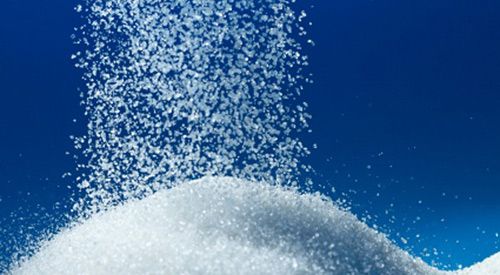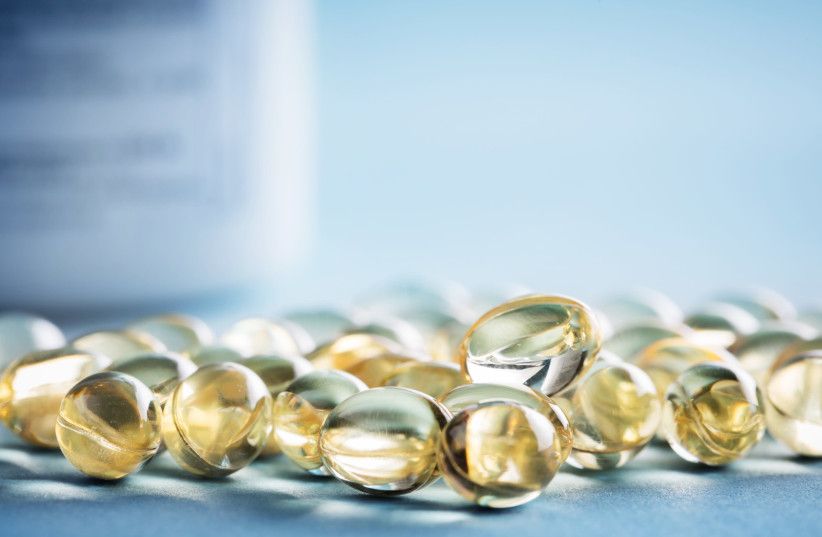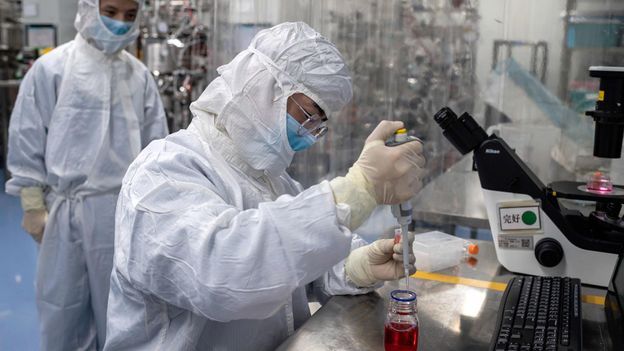(Reuters) — Moderna Inc said on Sunday it has received an additional $472 million from the U.S. government’s Biomedical Advanced Research and Development Authority (BARDA) to support development of its novel coronavirus vaccine.



People often talk about sugar intake and health 🤔
Researchers have successfully increased cancer cells’ sensitivity to chemotherapy to prevent glucose from entering the cancer cell.
Researchers at Lund University in Sweden have successfully increased cancer cells’ sensitivity to chemotherapy by preventing sugar uptake. Their study, “Targeting Glut1 In Acute Myeloid Leukemia To Overcome Cytarabine Resistance,” is published in Haematologica.
It is true that sugar feeds every cell in our body, even cancer cells. Researchers have long wondered if it would be possible to prevent glucose from entering the cancer cell and in that way increase the effect of chemotherapy.
To enable sugar molecules to enter the cancer cell through the cell membrane, the cell uses glucose transporters (GLUTs), which allow substances in and out. Researchers decided to study GLUT1 and its role in acute myeloid leukemia (AML).

Low levels of vitamin D may put people at risk for developing COVID-19, a new study by לאומית שירותי בריאות and the Azrieli Faculty of Medicine of Bar-Ilan University.
Vitamin D has long been understood to impact immune response. According to Dr. Milana Frenkel-Morgenstern, leader of the Azrieli Faculty of Medicine research group, as much as 70% of the adult population worldwide is vitamin D insufficient or deficient.
The Leumit and Bar-Ilan scientists analyzed if the risk of developing COVID-19 or becoming hospitalized because of it increases for people who have a low level of vitamin D.
They studied 782 Israeli COVID-19-positive patients and 7,825 negative patients and determined that a low plasma vitamin D level appears to be an independent risk factor for COVID-19 infection and hospitalization.
“We don’t know the mechanism,” Frenkel-Morgenstern said. “What we do know is that people who develop severe COVID and were hospitalized – these people have significantly low vitamin D levels.”
❤️ Check out Weights & Biases and sign up for a free demo here: https://www.wandb.com/papers
Their instrumentation of this paper is available here:
https://app.wandb.ai/stacey/stargan/reports/Cute-Animals-and…zoxNzcwODQ
📝 The paper “StarGAN v2: Diverse Image Synthesis for Multiple Domains” is available here:
- Paper: https://arxiv.org/abs/1912.01865
- Code: https://github.com/clovaai/stargan-v2
- Youtube Video: https://youtu.be/0EVh5Ki4dIY
The paper with the latent space material synthesis is available here:
🙏 We would like to thank our generous Patreon supporters who make Two Minute Papers possible:
Aleksandr Mashrabov, Alex Haro, Alex Paden, Andrew Melnychuk, Angelos Evripiotis, Benji Rabhan, Bruno Mikuš, Bryan Learn, Christian Ahlin, Daniel Hasegan, Eric Haddad, Eric Martel, Gordon Child, Javier Bustamante, Lorin Atzberger, Lukas Biewald, Michael Albrecht, Nikhil Velpanur, Owen Campbell-Moore, Owen Skarpness, Ramsey Elbasheer, Robin Graham, Steef, Sunil Kim, Taras Bobrovytsky, Thomas Krcmar, Torsten Reil, Tybie Fitzhugh.
More info if you would like to appear here: https://www.patreon.com/TwoMinutePapers
Károly Zsolnai-Fehér’s links:

North Korea declared a state of emergency on Sunday after one person in the country was suspected of being positive for COVID-19.
On Sunday, local time, state news agency KCNA reported North Korean leader Kim Jong Un  Kim Jong UnNorth Korea declares state of emergency due to a suspected COVID-19 case Pompeo downplays chance of summit with North Korea this year Juan Williams: Trump’s silence on Russian bounties betrays America MORE convened an emergency politburo meeting after a person who defected to South Korea three years ago was “suspected to have been infected with the vicious virus.” The person is reported have returned to the North Korean border city of Kaesong, Reuters reported.
Kim Jong UnNorth Korea declares state of emergency due to a suspected COVID-19 case Pompeo downplays chance of summit with North Korea this year Juan Williams: Trump’s silence on Russian bounties betrays America MORE convened an emergency politburo meeting after a person who defected to South Korea three years ago was “suspected to have been infected with the vicious virus.” The person is reported have returned to the North Korean border city of Kaesong, Reuters reported.
Kim declared a state of emergency and imposed a lockdown in Kaesong, reportedly calling it a “critical situation in which the vicious virus could be said to have entered the country.”

In the first of a four-part series, we look at the changes that have propelled China’s stock market into the world’s top performer this year.
The Star Market, conceived and created within eight months, has expanded into Asia’s largest growth market after a year in operation, with 133 listed stocks valued at US$400 billion.
Dozens of China’s biggest start-ups were driven to New York over the past two decades to seek funding. Now, as US-China tensions rise, more and more of them are choosing to stay close to home.

The clues have been mounting for a while. First, scientists discovered patients who had recovered from infection with Covid-19, but mysteriously didn’t have any antibodies against it. Next it emerged that this might be the case for a significant number of people. Then came the finding that many of those who do develop antibodies seem to lose them again after just a few months.
In short, though antibodies have proved invaluable for tracking the spread of the pandemic, they might not have the leading role in immunity that we once thought. If we are going to acquire long-term protection, it looks increasingly like it might have to come from somewhere else.
But while the world has been preoccupied with antibodies, researchers have started to realise that there might be another form of immunity – one which, in some cases, has been lurking undetected in the body for years. An enigmatic type of white blood cell is gaining prominence. And though it hasn’t previously featured heavily in the public consciousness, it may well prove to be crucial in our fight against Covid-19. This could be the T cell’s big moment.
While the latest research suggests that antibodies against Covid-19 could be lost in just three months, a new hope has appeared on the horizon: the enigmatic T cell.

CORPUS CHRISTI, Texas (AP) — Hurricane Hanna roared ashore onto the Texas Gulf Coast on Saturday, bringing winds that lashed the shoreline with rain and storm surge, and even threatening to bring possible tornadoes to a part of the country trying to cope with a spike in coronavirus cases.
The first hurricane of the 2020 Atlantic hurricane season made landfall twice as a Category 1 storm on Saturday afternoon within the span of little over an hour. The first landfall happened at around 5 p.m. about 15 miles (24 kilometers) north of Port Mansfield, which is about 130 miles (209 km) south of Corpus Christi. The second landfall took place nearby in eastern Kenedy County. Hanna had come ashore with maximum sustained winds of 90 mph (145 kph). As of Saturday night, those winds had weakened to 75 mph (120 kph).
Many parts of Texas, including areas near where Hanna came ashore, have been dealing with a surge in coronavirus cases in recent weeks, but local officials said they were prepared for whatever the storm might bring.

The nation has also generated significant additional value in logistics by creating new manufacturing capacities and know-how. There are already multiple businesses outside the realm of the space industry that have benefited from knowledge transfer. These are all typical impacts of a space mission.
But while that is where most studies of the value of space missions stop looking for impact, for the UAE this would miss a huge part of the picture. Ultimately, its Mars mission has generated transformative value in building capacity for a fundamentally different future national economy – one with a much stronger role for science and innovation.
Through a broad portfolio of programmes and initiatives, in just a few years the Hope mission has boosted the number of students enrolling in science degrees and helped create new graduate science degree pathways. It has also opened up new sources of funding for research and made science an attractive career.

A radiation-absorbing fungus found at the destroyed Chernobyl nuclear reactor has been shown to absorb harmful cosmic rays on the International Space Station, and could potentially be used to protect future Mars colonies.
Exposure to cosmic rays poses a major health risk to astronauts leaving Earth’s protective atmosphere. Shields can be made out of stainless steel and other materials, but they must be shipped from Earth, which is difficult and costly.